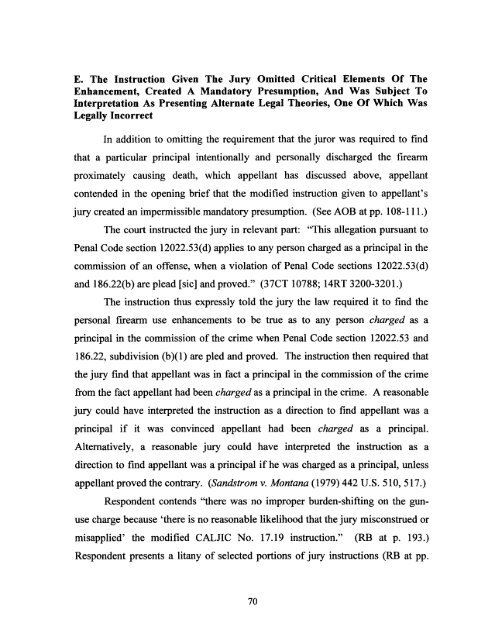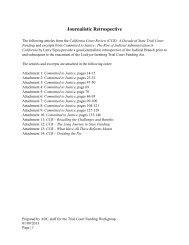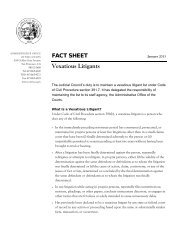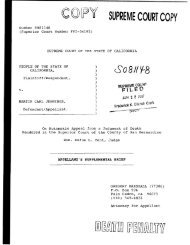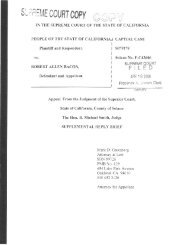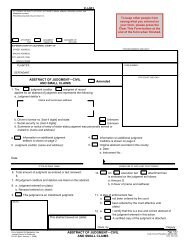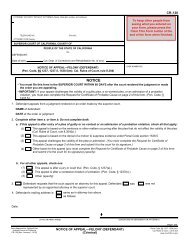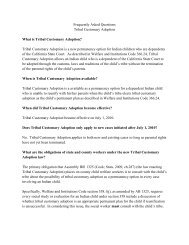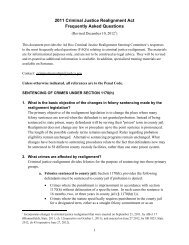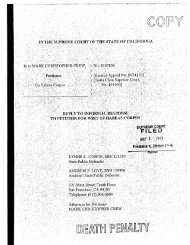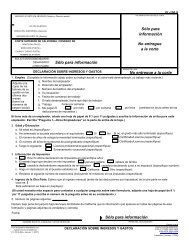Appellant, William Satele, Reply Brief - California Courts - State of ...
Appellant, William Satele, Reply Brief - California Courts - State of ...
Appellant, William Satele, Reply Brief - California Courts - State of ...
Create successful ePaper yourself
Turn your PDF publications into a flip-book with our unique Google optimized e-Paper software.
E. The Instruction Given The Jury Omitted Critical Elements Of The<br />
Enhancement, Created A Mandatory Presumption, And Was Subject To<br />
Interpretation As Presenting Alternate Legal Theories, One Of Which Was<br />
Legally Incorrect<br />
In addition to omitting the requirement that the juror was required to fmd<br />
that a particular principal intentionally and personally discharged the firearm<br />
proximately causing death, which appellant has discussed above, appellant<br />
contended in the opening brief that the modified instruction given to appellant's<br />
jury created an impermissible mandatory presumption. (See AOB at pp. 108-111.)<br />
The court instructed the jury in relevant part: "This allegation pursuant to<br />
Penal Code section 12022.53(d) applies to any person charged as a principal in the<br />
commission <strong>of</strong> an <strong>of</strong>fense, when a violation <strong>of</strong> Penal Code sections 12022.53(d)<br />
and 186.22(b) are plead [sic] and proved." (37CT 10788; 14RT 3200-3201.)<br />
The instruction thus expressly told the jury the law required it to find the<br />
personal firearm use enhancements to be true as to any person charged as a<br />
principal in the commission <strong>of</strong> the crime when Penal Code section 12022.53 and<br />
186.22, subdivision (b)(1) are pled and proved. The instruction then required that<br />
the jury find that appellant was in fact a principal in the commission <strong>of</strong>the crime<br />
from the fact appellant had been charged as a principal in the crime. A reasonable<br />
jury could have interpreted the instruction as a direction to find appellant was a<br />
principal if it was convinced appellant had been charged as a principal.<br />
Alternatively, a reasonable jury could have interpreted the instruction as a<br />
direction to find appellant was a principal if he was charged as a principal, unless<br />
appellant proved the contrary. (Sandstrom v. Montana (1979) 442 U.S. 510, 517.)<br />
Respondent contends ''there was no improper burden-shifting on the gun<br />
use charge because 'there is no reasonable likelihood that the jury misconstrued or<br />
misapplied' the modified CALJIC No. 17.19 instruction." (RB at p. 193.)<br />
Respondent presents a litany <strong>of</strong> selected portions <strong>of</strong> jury instructions (RB at pp.<br />
70


